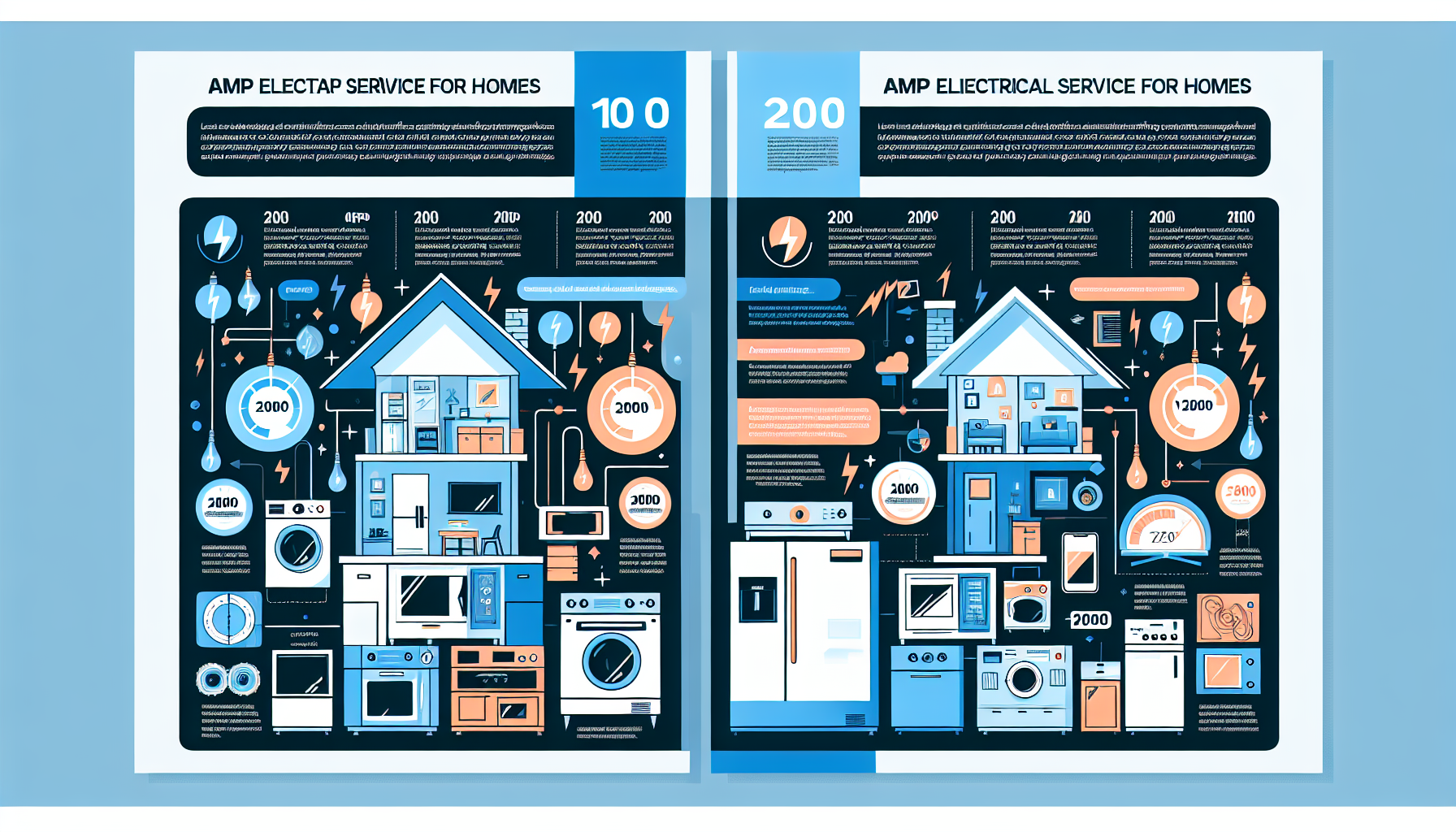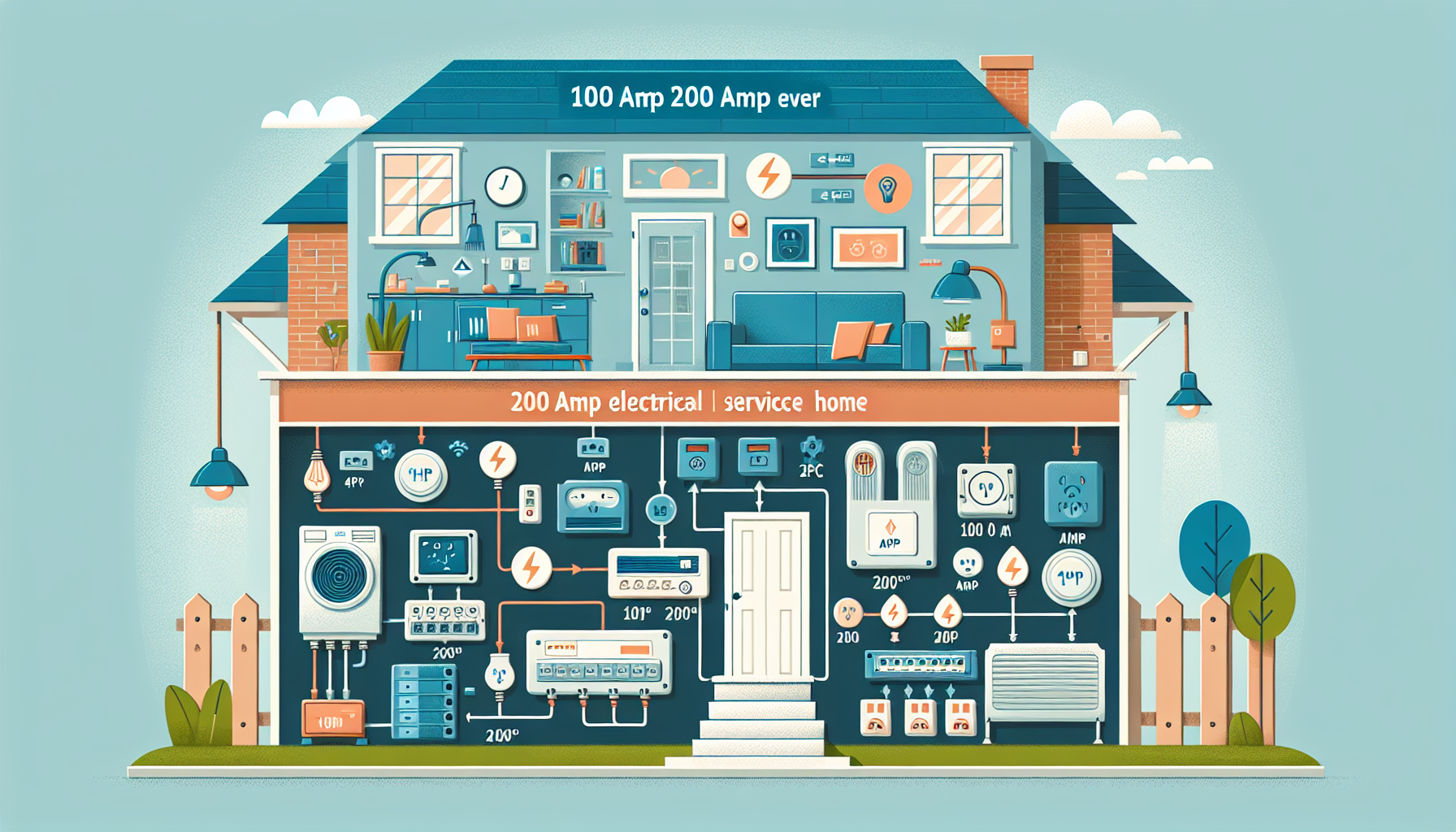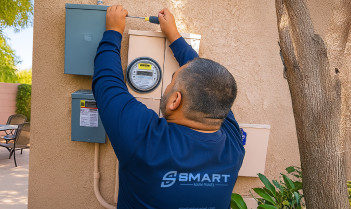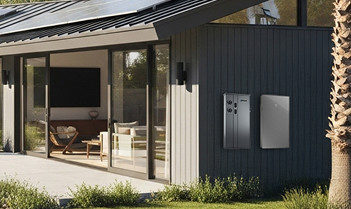
Date
Do Most Homes Have 100 Or 200 Amp Service?
Have you ever wondered what type of electrical service your home has? It’s not a topic that typically comes up in casual conversation, but it’s an important aspect of home ownership. In this article, we will explore whether most homes have 100 or 200 amp service. Understanding the amperage of your home’s electrical system is crucial for ensuring that it can support your energy needs without overloading. So, let’s get started and shed some light on this common question!

Breakdown of Electrical Service in Homes
Overview of electrical service
Electrical service refers to the capacity of an electrical system to deliver power to a home. It is measured in amps (amperes) and plays a crucial role in ensuring the safe and efficient functioning of all electrical appliances and devices in a household. Understanding the amp service of a home is important for homeowners, as it determines the electrical load that can be safely supported, preventing electrical hazards and overloading of circuits.
Importance of amp service
The amp service of a home is essential for meeting the electrical demands of modern households. With the increasing reliance on electrical appliances, gadgets, and devices, having an adequate amp service is crucial to avoid potential electrical problems. Insufficient amp service can lead to frequent circuit overloads, tripped breakers, and even electrical fires. Therefore, having the appropriate amp service is necessary for the safety and functionality of a home.
Difference between 100 and 200 amp service
The main difference between 100 amp and 200 amp service lies in their capacity to deliver electrical power. A 100 amp service is typically found in older homes or smaller residences, while a 200 amp service is more common in newer and larger properties. The higher amperage of 200 amp service allows for a greater amount of electricity to be distributed, meeting the higher electrical demands of modern households.
Factors Influencing Amp Service
Age of the home
The age of a home is a significant factor in determining the amp service it may have. Older homes, particularly those built before the 1960s, commonly have 100 amp service. This was considered sufficient at the time when electrical appliances were not as prevalent as they are today. However, with the introduction of various modern appliances, larger electrical loads are often required, making 200 amp service more common in newer homes.
Size and layout of the home
The size and layout of a home also play a role in determining the appropriate amp service. Larger homes with more square footage generally require a higher amp service to meet the increased electrical demands. Additionally, homes with complex layouts or multiple floors may require more circuits, reinforcing the need for a higher amp service to accommodate the distribution of electricity throughout the various areas of the house.
Number of electrical appliances and devices
The number and type of electrical appliances and devices in a home directly impact the amp service required. A higher number of appliances, such as air conditioners, electric water heaters, and kitchen gadgets, will demand more electricity. Similarly, advancements in technology have led to the proliferation of various power-hungry devices, including home entertainment systems and electric vehicle chargers, which can strain a 100 amp service. In such cases, a 200 amp service is often necessary to adequately meet the electrical demands of the household.
Understanding Amp Service
What is an amp?
An amp, short for ampere, is the unit of measure for electric current. It quantifies the rate at which electric charges flow through a circuit. In practical terms, an amp represents the amount of electricity used by a single 100-watt lightbulb over the course of an hour. The higher the amps, the more electrical power can be safely distributed throughout a home.
How does amp service work?
Amp service, also known as electrical service or electrical panel capacity, is determined by the rating of the electrical service panel, commonly called a breaker box or distribution board. The panel houses circuit breakers that protect individual circuits from overloading. The total amperage of all the breakers installed in the panel should not exceed the amp service rating. This ensures that the panel can safely supply the necessary electrical power to the circuits without risking overheating or electrical hazards.
Determining the amp service needed for a home
Determining the appropriate amp service for a home requires considering factors such as the size of the home, the electrical load created by appliances and devices, and future expansion plans. Generally, smaller homes with fewer appliances may be adequately served by a 100 amp service. However, larger homes with a multitude of electrical devices and the potential for future additions, such as home office or workshop setups, would benefit from a 200 amp service to ensure sufficient power supply.

Advantages and Limitations of 100 Amp Service
Advantages of 100 amp service
There are several advantages to having a 100 amp service in a home. One of the main benefits is the lower initial installation cost compared to a 200 amp service. Additionally, older homes with 100 amp service often have wiring systems that were originally designed for this amp rating, making it more cost-effective to maintain the existing electrical setup. For homes with moderate electrical demands and fewer appliances, a 100 amp service can adequately meet the power requirements.
Limitations of 100 amp service
Despite its advantages, 100 amp service has certain limitations. The lower amp capacity restricts the overall electrical load that can be supported, often leading to a higher likelihood of circuit overloads and tripped breakers. This can be particularly problematic in modern households with a higher number of electrical devices. Additionally, as technology advances and homeowners desire additional amenities and appliances, a 100 amp service may become insufficient to support the increased power demand.
Common scenarios where 100 amp service is sufficient
A 100 amp service is typically sufficient for smaller homes or residences with fewer electrical appliances and devices. Homes with minimal heating and cooling needs, limited kitchen appliances, and a smaller number of occupants can often function well with a 100 amp service. Additionally, if electrical demand management techniques are employed, such as staggering the use of high-powered appliances or using energy-efficient devices, a 100 amp service can meet the power requirements of such homes.
Advantages and Limitations of 200 Amp Service
Advantages of 200 amp service
The primary advantage of a 200 amp service is its ability to handle larger electrical loads. With double the amp capacity of a 100 amp service, a 200 amp service can comfortably accommodate multiple high-demand appliances, such as air conditioners, electric water heaters, and home theaters, without overloading the circuit. This allows for greater flexibility in upgrading and expanding electrical systems, making it suitable for modern households with a higher reliance on electrical devices.
Limitations of 200 amp service
While a 200 amp service offers greater capacity, it also comes with a few limitations. One limitation is the higher installation cost compared to a 100 amp service. Upgrading an existing electrical system to a 200 amp service involves rewiring, replacing the electrical panel, and potentially upgrading the utility’s service connection. Additionally, not all homes may have the electrical infrastructure to support a 200 amp service, requiring costly renovations to accommodate the higher electrical demands.
Common scenarios where 200 amp service is necessary
A 200 amp service is necessary in larger homes or residences with a substantial number of electrical appliances and devices. Homes with multiple floors, extensive heating and cooling systems, substantial kitchen appliances, and a higher number of occupants often require the electrical capacity that a 200 amp service provides. Furthermore, if there are plans for future expansions or additions, such as the installation of an electric vehicle charger or a home office with numerous electronic devices, a 200 amp service is recommended to accommodate the increased electrical load.
Cost Considerations
Initial installation costs
The costs associated with amp service installation vary depending on several factors, including the amp rating selected, the existing electrical infrastructure, and the complexity of the electrical system. Generally, the initial installation cost of a 100 amp service is lower than that of a 200 amp service due to the lower amp capacity and lesser need for extensive upgrades. However, it is important to obtain quotes from licensed electricians to assess the specific costs associated with amp service installation for a particular home.
Upgrading from 100 to 200 amp service
Upgrading from a 100 amp service to a 200 amp service typically involves rewiring, replacing the electrical panel, and potentially upgrading the utility’s service connection. This process requires the expertise of a professional electrician to ensure compliance with electrical codes and safety regulations. The cost of upgrading amp service can vary depending on factors such as the size of the home, the complexity of the electrical system, and any necessary renovations. Homeowners should consult with electricians to obtain accurate estimates for the cost of such upgrades.
Long-term cost benefits and savings
While the initial installation cost of a 200 amp service may be higher, it can provide long-term cost benefits and savings. With a higher amp capacity, there is less risk of circuit overloads and tripped breakers, reducing the need for frequent repairs and replacements. Additionally, a 200 amp service allows for the installation of energy-efficient appliances and devices, promoting energy savings over time. It is important to consider the long-term implications and potential cost savings when deciding on the appropriate amp service for a home.
Upgrading Amp Service
Assessing the need for an upgrade
Assessing the need for an amp service upgrade involves evaluating factors such as the electrical load, the number of electrical appliances and devices, and future expansion plans. If a home frequently experiences circuit overloads, regularly trips breakers, or struggles to meet the power demand of modern appliances, an upgrade may be necessary. Additionally, if there are plans for installing new high-demand appliances or expanding the electrical system, an upgrade to a higher amp service may be the most practical solution.
Hiring a professional electrician
Upgrading amp service should always be carried out by a licensed and qualified electrician. Electricians have the expertise and knowledge to assess the electrical demands of a home, make the necessary calculations, and ensure compliance with electrical codes and safety regulations. It is crucial to hire a reputable electrician who can provide accurate assessments, provide recommendations, and complete the upgrade in a safe and efficient manner.
Process and time required for an upgrade
The process of upgrading amp service involves several steps, including obtaining necessary permits, rewiring, replacing the electrical panel, and potentially upgrading the utility’s service connection. The time required to complete an upgrade can vary depending on factors such as the size of the home, the complexity of the electrical system, and any necessary renovations. It is advisable to consult with the electrician to get a clear understanding of the timeline for the upgrade.
Other Alternatives and Solutions
Lowering electrical demand
One alternative to amp service upgrades is to lower the overall electrical demand of a home. This can be achieved through various strategies, such as using energy-efficient appliances, turning off unused devices, and employing energy management practices. By actively managing and reducing the electrical load, homeowners may be able to alleviate the strain on their current amp service and avoid the need for an immediate upgrade.
Installing subpanels
Installing subpanels is another solution to consider when the electrical demands of a home exceed the capacity of the existing amp service. Subpanels, also known as subsidiary panels, provide additional circuit capacity and distribution points within a home. By installing subpanels strategically, homeowners can allocate specific circuits to different areas of the house, effectively managing the electrical load and reducing the strain on the main amp service.
Using load management strategies
Load management strategies involve balancing the electrical demand of a home by staggering the use of high-powered appliances, such as air conditioners, clothes dryers, and electric water heaters. By avoiding simultaneous usage of these high-demand appliances, homeowners can reduce the risk of circuit overloads and tripped breakers. Implementing load management strategies can help optimize the use of a lower amp service when upgrading is not immediately feasible.
Applicable Safety Regulations
National Electrical Code (NEC) requirements
The National Electrical Code (NEC) is a set of standards and guidelines developed by the National Fire Protection Association (NFPA). It provides requirements for the safe installation of electrical wiring and equipment to protect people and property from electrical hazards. Compliance with NEC requirements is essential when installing, upgrading, or modifying amp service in a home. Electricians are familiar with these code requirements and ensure that all electrical work is performed in accordance with the NEC standards.
Local building codes and permits
In addition to the NEC, local building codes and permits must be considered when upgrading amp service. Building codes provide regulations specific to individual jurisdictions to ensure that electrical systems are installed and maintained safely and effectively. Obtaining the necessary permits, which are typically issued by local building authorities, is a crucial step in complying with local regulations and ensuring that the amp service upgrade is performed legally and up to code.
Ensuring compliance and avoiding safety hazards
Adhering to safety regulations, such as the NEC and local building codes, is essential to ensure the safety of a home’s electrical system. Non-compliance can lead to safety hazards, including electrical shocks, fire risks, and inadequate grounding. To guarantee compliance and avoid safety hazards, it is crucial to hire a licensed electrician who is knowledgeable about the applicable regulations and experienced in performing amp service upgrades.
Conclusion
Understanding the breakdown of electrical service in homes is essential for homeowners to ensure the safe and efficient functioning of their electrical systems. Factors such as the age of the home, size and layout, and the number of electrical appliances and devices all influence the appropriate amp service needed. While 100 amp service may be sufficient for smaller homes with minimal electrical demands, larger homes with advanced appliances often require a 200 amp service. Upgrading amp service involves careful evaluation of electrical needs, hiring a professional electrician, and complying with safety regulations. By making informed decisions and taking necessary steps, homeowners can ensure their electrical systems are reliable, safe, and able to meet the demands of modern living.



